I’ve said it before and I’ll say it as many times as needed: reviews and customer feedback are more important than ever. Having a Yelp business listing is a no-brainer. Yelp is not only a powerful site but also an essential component of the Local Search Ecosystem; after all, Yelp makes it into the top three local pages within our listing management technology.
For search engines, review sites such as Yelp are considered the most authoritative when it comes to reviews, and no wonder! Since Yelp was founded in 2004, it has contributed millions of reviews for a variety of services, from restaurants to doctors and plumbing companies. It’s truly a hub of information for customers on the hunt for particular services. How often can you do a search for a local business without Yelp surfacing at the top?
Now that we’ve established just how powerful Yelp is, let’s dig into why a Yelp business listing is important for local businesses or service area businesses.
The Importance of Yelp to Local Businesses
Every month, 73.9 million desktop users and 72.3 million mobile users visit Yelp for help during their buying journey. Over 45 percent of consumers surveyed by ReviewTrackers Online claimed that they check Yelp before making a purchase.
This is exactly why local businesses can really benefit from creating and updating their listings on Yelp and monitoring their customers’ feedback. Not only does every business need a listing on Yelp, but every business also needs accurate information listed, including their address, phone number, hours of operation, etc. If a potential customer can’t find a business on their favorite review site, they will likely move on to a business’ competitor they can find.
How to Claim a Yelp Business Page
Before creating a new Yelp page, check here to see if a listing for the business already exists. If you can’t find the particular local business you’re looking for, then set up a new profile.
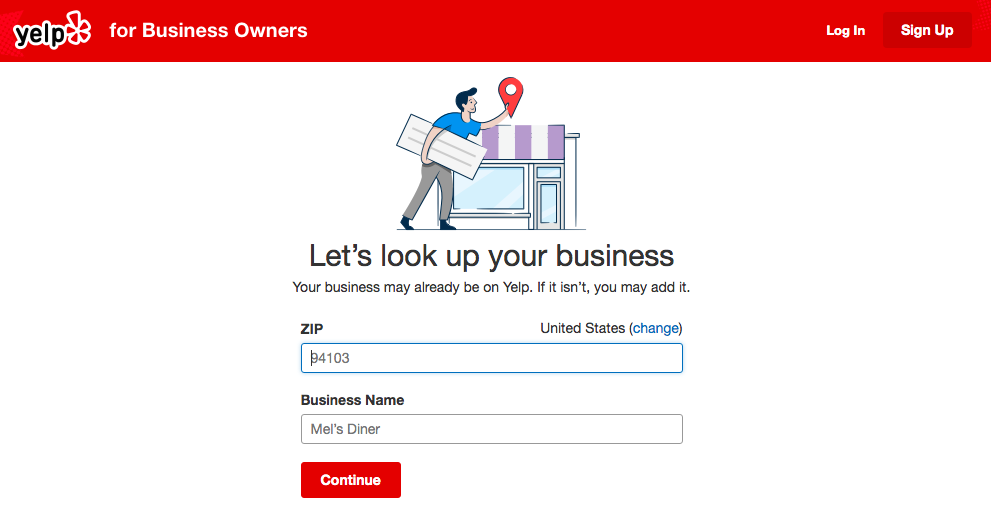
1. Complete the Business’ Yelp Page Information
First things first: the company profile needs accurate details. Fill out basic information like the business’ name, address and phone number (NAP). Include a website link as well. If the business has in-store hours or phone hours, list those, too.
Additionally, the relevant categories for the business should all be detailed in the “Categories” space. Try to cover as many as possible to maximize the business’ reach on Yelp, but don’t overstate services if the company doesn’t really offer them. Potential customers need to trust the business from the get-go.
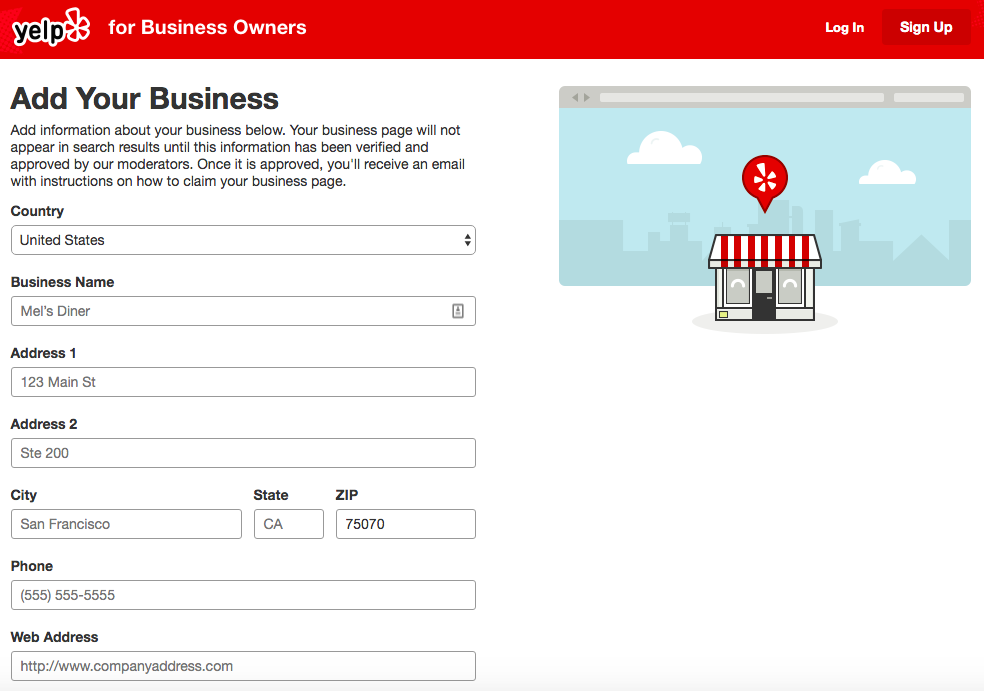
2. Upload Compelling Images
Once the basic profile has been created, it’s time to upload some high-quality images to give potential customers a better idea of what the business offers.
- Include a minimum of five photos featuring the business’ location, exterior design, menus, services, interiors, products and anything else that might make customers choose this business over a competitor.
- It’s always best to include detailed photos, so think of the pictures that would best benefit people on the hunt for the business’ services.
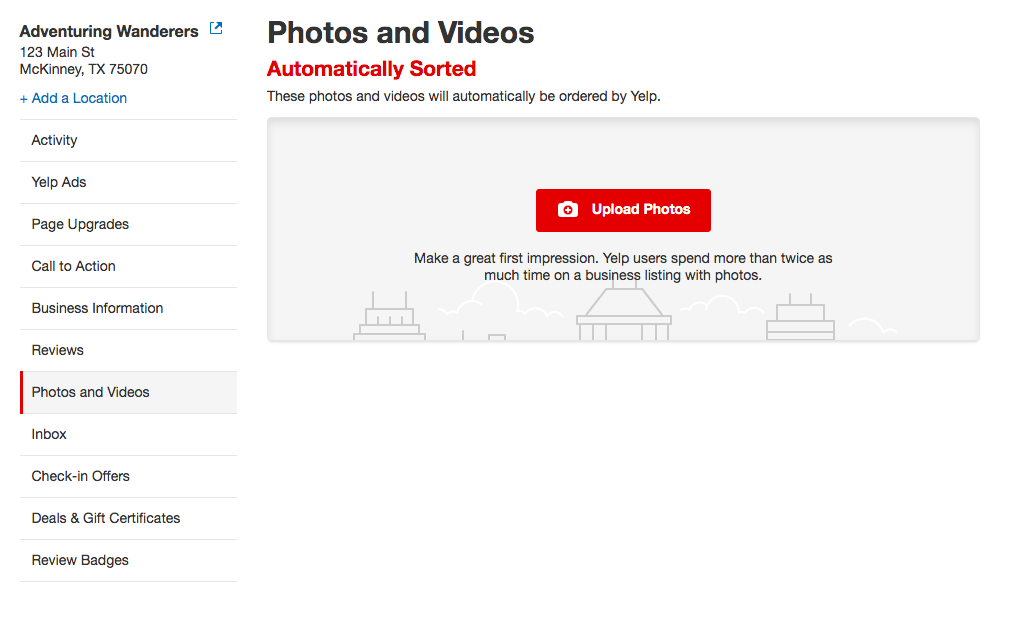
An analysis of customer activity on the business’ page – or on similar pages – will help determine what customers are looking for in a business’ Yelp profile, including certain keywords. The more we can learn about a business’ audience, the easier it will be to tailor the profile to the audience’s needs.
Moving Beyond the Basics of a Yelp Business Listing
Once the basics are done, like providing store hours or the correct address, using Yelp to educate potential customers on the company’s background and benefits is a must. Here are a few other sections to consider filling out.
1. Meet the Owner/Manager
Customers like putting friendly faces to businesses, especially when it comes to local companies. Yelp has a section for telling people about the business’ owner or manager and why they love providing their services to customers. Make this description uplifting and personal so that Yelp users can form a connection with the business and what the business stands for.
2. History
This section is especially helpful if the business has changed names or locations in the past. It also provides the opportunity to talk about the business’ values and how far it has come, and to share its roots.
3. Specialties
This section provides an opportunity to highlight specific services the business offers. This is the ideal place to include relevant keywords and make the business stand out from its competitors that provide similar services.
Everyone Needs Reviews on a Yelp Business Listing
Although customers may look for information about a business on Yelp, they mainly visit the site for one big reason: reviews. If a business has just created a profile, then there are likely very few reviews for the business.
According to BrightLocal, consumers read an average of 10 online reviews before they feel like they can trust a local business. Therefore, the more positive reviews gathered, the better off the business will be.
Tips for Gathering Yelp Reviews
To increase the number of positive reviews, share the new Yelp listing with former customers, friends and family members. Since Yelp has a strict policy about soliciting reviews, we recommend that you proceed with caution.
Once the business has a dozen reviews or so, try to obtain more reviews in natural ways. Here are a few methods:
- Share the business’ Yelp reviews on their website and other platforms.
- Include details on how to provide feedback on email and print receipts.
- Consider using a third-party tool to follow up with customers after a service has been provided. It’s important to make sure the selected tool isn’t breaking any rules like review-gating.
Another word of caution: don’t come across as a desperate business soliciting reviews. Always be polite in the approach and try to get reviews naturally rather than forcefully.
Also: fake reviews are bad news, so don’t even think about trying to increase a business’ rating with falsified feedback!
Always Respond to Reviews – Both Positive and Negative
Whether a business receives a positive or negative review, a customer service representative should address the comment. Replying directly to a happy customer lets them know their feedback is appreciated, and the response draws more attention to the stellar review. When responding to a negative review, businesses have the chance to clarify statements made in the review and take action to make it right, which always improves the business’ appearance in the eyes of prospective customers.
Remember, these responses to reviewers should be public where other people can view them. ReviewTrackers Online also revealed that currently, 63 percent of consumers never hear back from a business after leaving a review. A business can stand out from the crowd by responding politely. Overall, this can greatly improve a business’ online reputation.
The Yelp Community Has Questions You Need to Answer
Back in early 2017, Yelp made it even easier for a business to communicate with prospective customers through the Yelp Questions and Answers feature. Users (the community) on Yelp can post specific questions about a business on their profile. The business and others in the community can respond to the questions.
This is an excellent way for the business to grow a loyal following, dispel myths about their business and clear up any misunderstandings. No longer does the business have to wait until they get a bad review to address common questions. Yelp even created The Business Owner’s Guide to Yelp Ask the Community. Check it out!
Dig Into Yelp’s Metric Dashboard
As you likely saw when creating the business profile, Yelp has a metric dashboard that provides valuable information about users’ behavior when visiting the business’ profile. It may take a bit of time for traffic to pick up, but over the course of the next few months, the business can use the data to figure out its next steps.
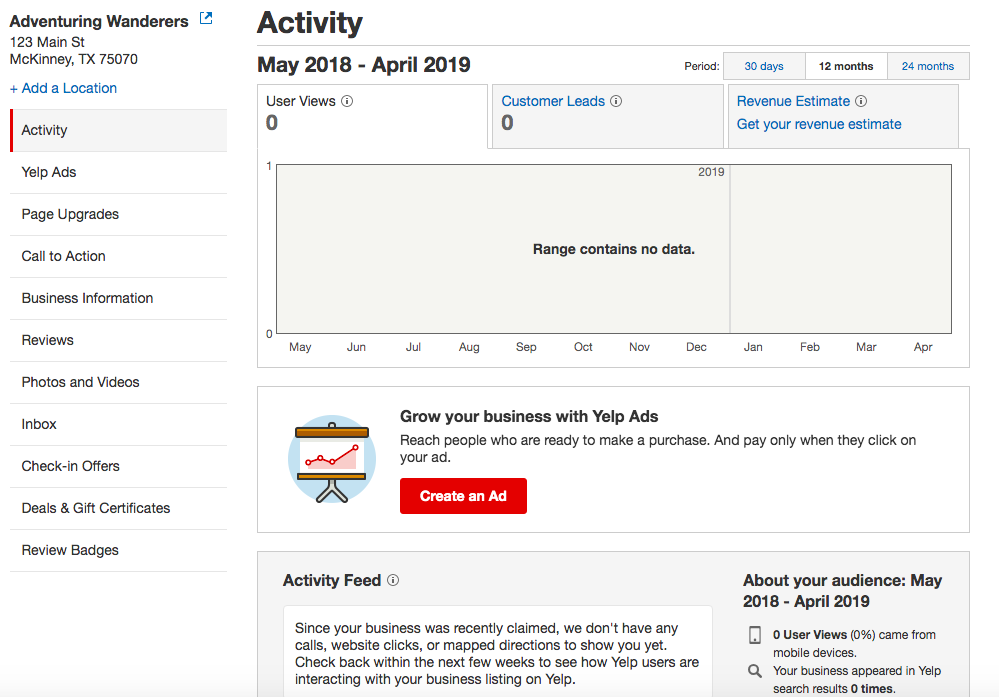
The dashboard can also reveal how much of the business’ revenue is coming from Yelp, as well as total user views and customer leads. All of these numbers equip businesses with the tools they need to more accurately advertise to their target audiences.
The Bottom Line
Now that we’ve provided you the top to bottom on a Yelp business listing, it’s time to help local businesses boost their online visibility and ratings, and attract more customers organically. Did you know that we create Yelp profiles as part of our listing management services? Learn how we help partners like you help their local business clients get found on Yelp and the other top directory sites by requesting a demo today.



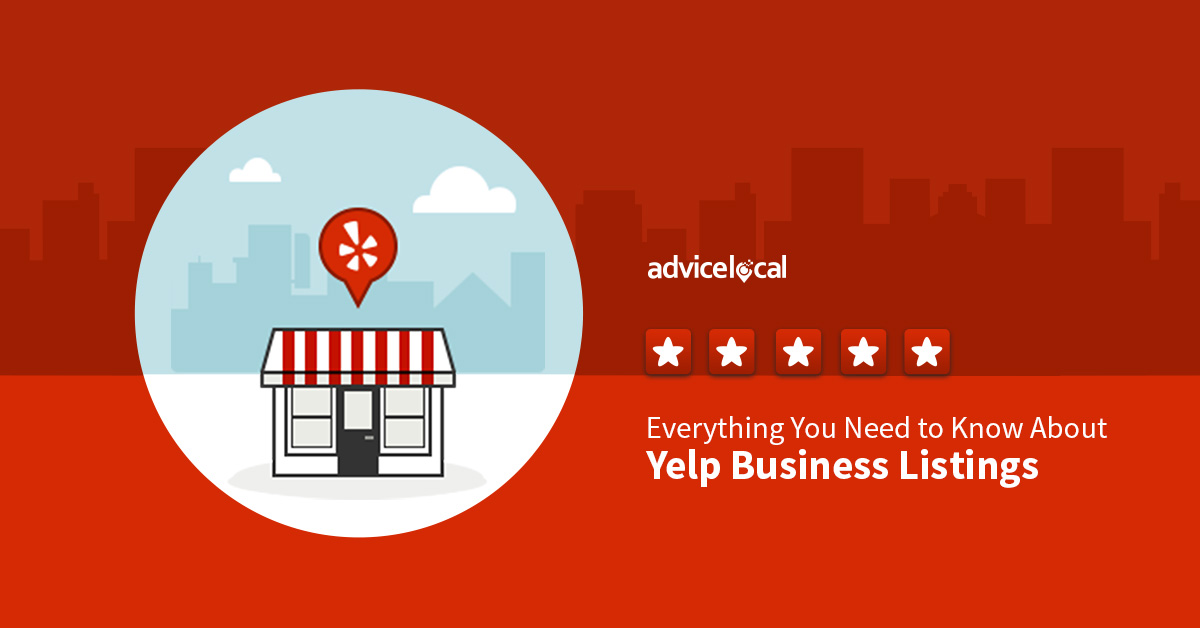
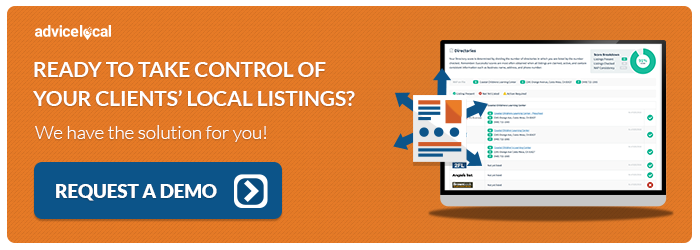
What about Yelps bad reputation for posting lots of bad reviews if you decide to stop paying for the service? I’ve been told by reputable marketers to stay away from Yelp for their shady business practices.
John, in my 10+ years in digital marketing I have never heard of Yelp themselves posting bad reviews for a business if you stop paying them. They can make it more of a challenge and probably provide less support when a consumer gives a bad review for a business, but the fact is consumers look to Yelp when considering who they are going to purchase from. Can a business really afford not to have a listing there? #FoodforThought